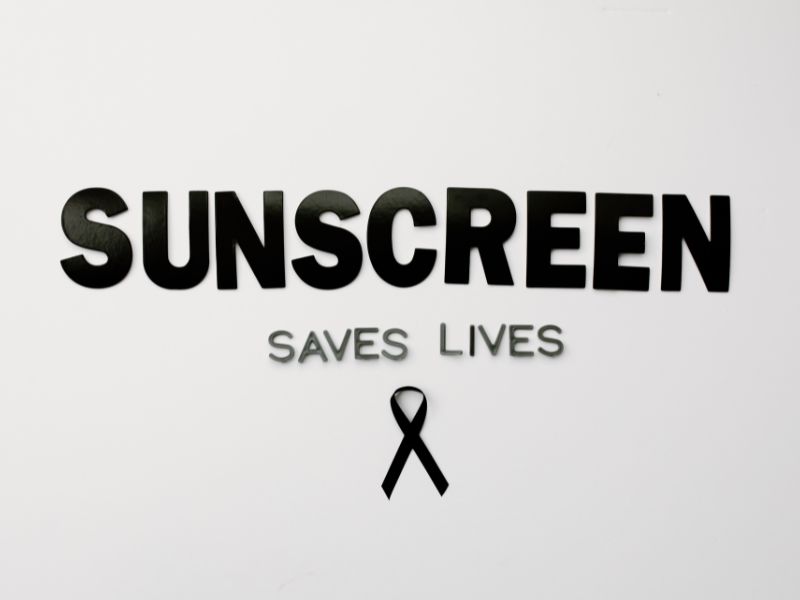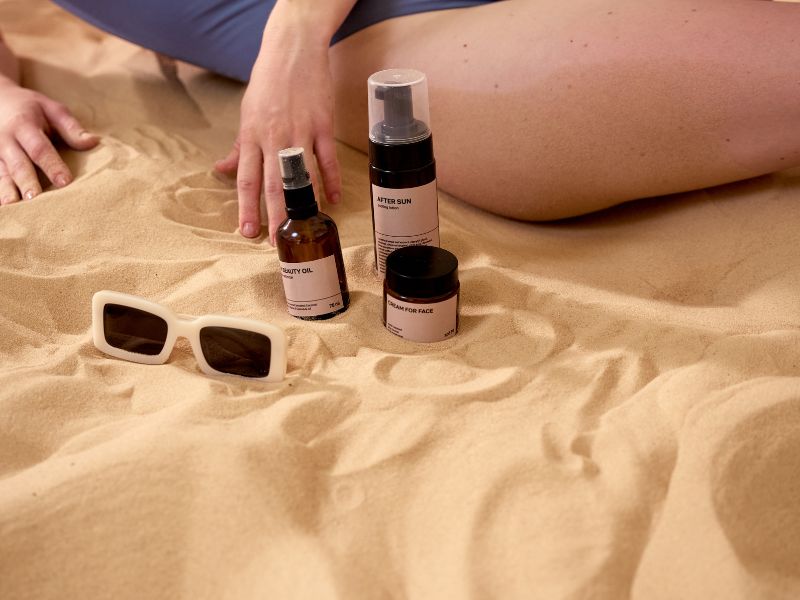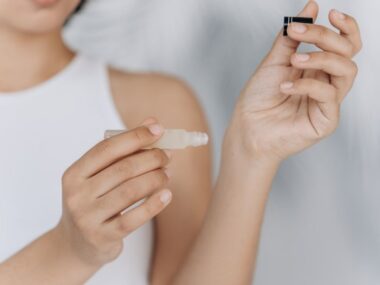There is a lot of interest in—and occasionally even debate over—the connection between sunscreen and cancer. Although sunscreen is mostly promoted as a means of shielding the skin from damaging ultraviolet (UV) rays, which are directly connected to skin cancer, concerns have been raised over the product’s efficacy, composition, and general safety of some sunscreen formulas. This article explores the intricate connection between sunscreen and cancer, discussing how it can prevent cancer, issues with its chemicals, and the best ways to protect yourself from the sun.
Sunscreen and Cancer: The Role of Sunscreen in Cancer Prevention
Ultraviolet Radiation and Skin Cancer
Ultraviolet radiation from the sun is categorized into three types: UVA, UVB, and UVC. UVC radiation is mostly absorbed by the Earth’s atmosphere, leaving UVA and UVB to affect the skin.
- UVA: Penetrates deep into the skin and contributes to skin ageing, wrinkles, and long-term skin damage.
- UVB: Primarily responsible for sunburn and has a more direct link to DNA damage, leading to skin cancer.
Both UVA and UVB rays have been associated with skin cancers, including melanoma, basal cell carcinoma (BCC), and squamous cell carcinoma (SCC). Numerous studies confirm that protecting the skin from these rays can reduce the risk of developing skin cancer, which is where sunscreen comes into play.
How Sunscreen Works
Sunscreens are designed to minimize skin exposure by absorbing, reflecting, or scattering UV rays. For complete protection, broad-spectrum sunscreens which work against both UVA and UVB rays are particularly crucial.
- Chemical Sunscreens: Contain organic (carbon-based) compounds like oxybenzone and avobenzone that absorb UV radiation, converting it into heat, which is then released from the skin.
- Physical (Mineral) Sunscreens: Use minerals like zinc oxide or titanium dioxide to reflect UV rays, providing a physical barrier against the sun.
Using sunscreen regularly has been shown to prevent sunburn, photoaging, and, most importantly, reduce the risk of certain types of skin cancer.
Evidence Linking Sunscreen Use to Lower Skin Cancer Risk
The effectiveness of sunscreen in preventing skin cancer has been studied extensively, with results showing a significant correlation between regular sunscreen use and lower rates of skin cancer:
- Melanoma Prevention: Sunburns and other sporadic, high-intensity UV exposure are highly linked to melanoma, the most deadly kind of skin cancer. According to studies, using sunscreen can prevent UV damage and lower the incidence of melanoma.
- Non-Melanoma Skin Cancers (NMSC): Regular sunscreen users have been found to have lower rates of basal cell carcinoma (BCC) and squamous cell carcinoma (SCC). According to a well-researched Australian study that tracked over 1,600 individuals for a number of years, daily sunscreen users had a 40% reduced risk of SCC than infrequent users.
The Controversy: Can Sunscreen Cause Cancer?
While the majority of studies support sunscreen as a cancer-preventive measure, questions have been raised about certain ingredients in sunscreens that may carry health risks. Some of the primary concerns include:
Oxybenzone and Hormone Disruption
Because of its propensity to permeate the skin and perhaps interfere with hormones, oxybenzone, a prominent constituent in many chemical sunscreens, has drawn criticism. According to some research on animals, oxybenzone may mimic estrogen in the body and have an impact on the endocrine system. Nevertheless, the concentrations needed to produce these effects are usually far more than what would normally be absorbed by using sunscreen. Despite these findings, some health-conscious customers prefer to avoid oxybenzone-containing products, favouring mineral sunscreens instead.
Retinyl Palmitate and Photocarcinogenic Concerns
Some sunscreens include retinyl palmitate, a vitamin A derivative that may cause cancer when exposed to sunshine. According to research on animals, retinyl palmitate may cause cellular harm by generating free radicals when exposed to UV light. However, the FDA and other regulatory bodies continue to authorize the use of retinyl palmitate in sunscreens despite the lack of clear proof in people.
Nanoparticles in Mineral Sunscreens
To avoid leaving a white film on the skin, mineral sunscreens frequently include zinc oxide and titanium dioxide in nanoparticle form. There have been worries that these nanoparticles might penetrate the skin and harm cells. Nonetheless, experts now agree that sunscreen’s nanoparticles are typically safe to use since they don’t pierce the skin deeply enough to reach live cells.
FDA Regulations and Safety of Sunscreen Ingredients
The FDA has strict regulations for sunscreen ingredients and requires testing to ensure their safety and efficacy. In 2019, the FDA released new guidelines and conducted research to assess the safety of sunscreen ingredients. The following findings were notable:
- Safe Ingredients: The FDA classified zinc oxide and titanium dioxide as generally recognized as safe and effective (GRASE).
- Further Data Needed: The FDA requested additional data on twelve active ingredients, including oxybenzone and avobenzone, to better understand their long-term safety. This action does not mean these ingredients are harmful but indicates that more research is necessary.
Most dermatologists agree that, despite some controversies, the benefits of sunscreen outweigh potential risks, especially when it comes to protecting against skin cancer.
How to Use Sunscreen Effectively
To maximize sunscreen’s protective benefits and minimize potential risks, it’s essential to use it correctly. Here are some tips for effective sunscreen application:
- Choose Broad-Spectrum Sunscreen: Select a sunscreen that protects against both UVA and UVB rays. Broad-spectrum labels ensure that both types of harmful rays are blocked.
- Use an SPF of 30 or Higher: The American Academy of Dermatology recommends an SPF of 30 or above for adequate protection. While higher SPFs provide incremental protection, SPF 30 is generally sufficient if reapplied as recommended.
- Apply Generously and Evenly: Most people do not apply enough sunscreen to achieve the SPF rating on the label. A sufficient amount is typically a shot glass full (about one ounce) to cover the whole body.
- Reapply Every Two Hours: Sunscreen efficacy diminishes over time and with exposure to water and sweat. Reapply every two hours, and more often if swimming or sweating.
- Combine Sunscreen with Other Protective Measures: Sunscreen should be part of a broader sun protection strategy. Wear protective clothing, seek shade during peak sun hours, and wear hats and sunglasses.
Alternative Sun Protection Measures
In addition to sunscreen, there are other measures you can take to protect your skin from UV damage and lower your cancer risk:
- UV-Protective Clothing: Specialized clothing with a high UPF (ultraviolet protection factor) rating can block UV rays more effectively than regular fabrics.
- Avoid Tanning Beds: Artificial tanning devices emit high levels of UV radiation and significantly increase the risk of skin cancers, particularly in young adults.
- Seek Shade During Peak UV Hours: The sun’s rays are strongest between 10 a.m. and 4 p.m. Staying in the shade during these hours can reduce exposure.
Future Directions: Research and Innovation in Sunscreen
Research on sunscreen is always changing, with studies being conducted to better understand the safety of ingredients and provide novel sun protection techniques. Future developments include wearable sensors that track UV exposure levels, oral sun protection supplements, and even “smart” sunscreens that adjust to UV exposure.
Researchers are also looking for safer, natural alternatives to chemical filters and the use of antioxidants in sunscreen to prevent the production of free radicals. Sunscreen safety will be evaluated and improved via ongoing FDA and foreign regulatory reviews that prioritize both efficacy and reducing health concerns.
Conclusion
Numerous scientific studies have established the link between sunscreen and cancer and show that it is a crucial preventative measure against skin cancer. The general message from health organizations throughout the world is clear: the advantages of wearing sunscreen much exceed any possible hazards, even while worries about specific chemicals call for attention and more investigation. You may greatly lower your chance of developing skin cancer and healthily enjoy the sun by using safe, effective sunscreens and implementing other sun-protective measures.






